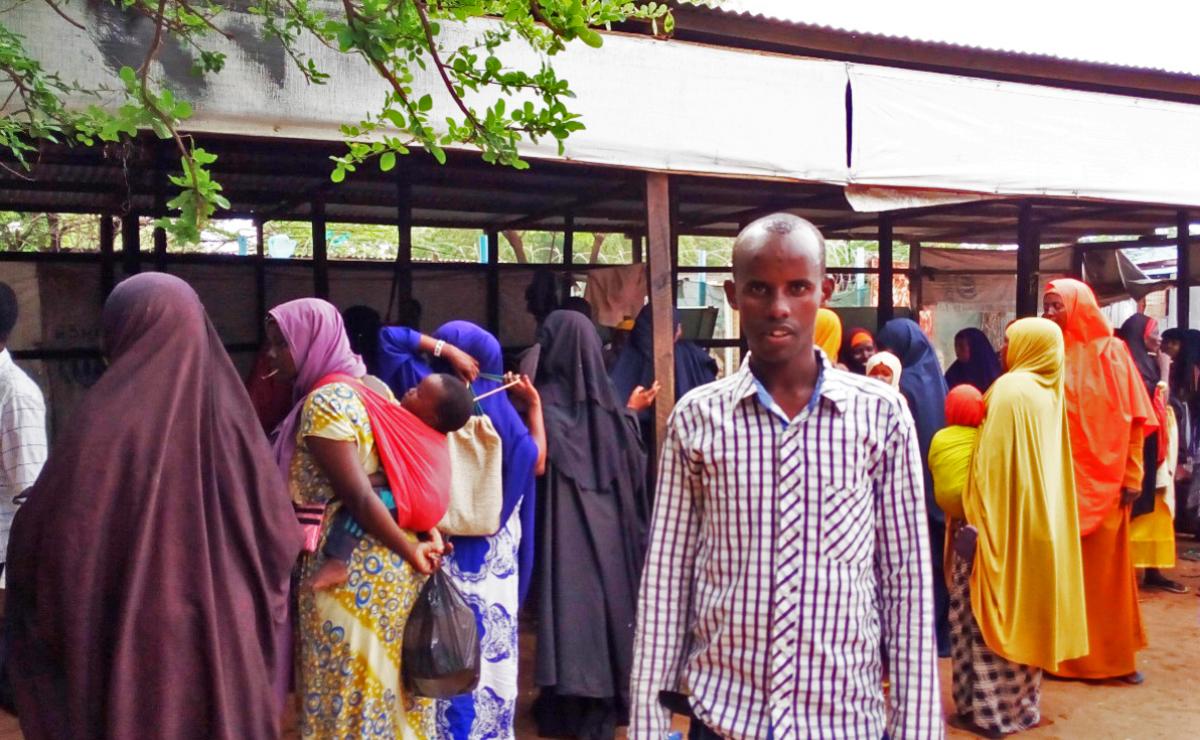Preparing young refugees for a return to Somalia

Initiative links refugee skills in Kenya to employment offers in Mogadishu
DADAAB, Kenya/ GENEVA, 6 January 2017 (LWI) - For Kadar Ali Ahmed, not even the sky is the limit.
The 27-year-old was born in Somalia and became a refugee at the age of 14. For half of his life, home was the Dadaab refugee camp in Kenya. Now he is preparing himself and many fellow refugees for a return to Somalia – and a life “back home”.
Education is key
Dadaab, a cluster of five large refugee camps in North – Eastern Kenya, is a city in itself. At peak times, the camp housed close to half a million refugees, living in the camps of Hagadera, Kambioos, Dagahaley, Ifo I and Ifo II. Their current combined population stands at around 240,000 people. According to UN data, more than 80 percent are women and children.
Ahmed knows about the struggle to receive a good education. As the fourth of eleven siblings, he still managed to successfully complete primary school, pass the exam and secure one of the much coveted places in Hagadera secondary school. When his family was relocated from Hagadera to Kambioos camp in 2011, Ahmed had to cover a distance of 4 kilometers per day to access education. The young man beat the odds and sat the Kenya Certificate of Secondary Education examination in which he scored a modest grade of C- in 2013.
Armed with his Secondary school certificate and burdened with the responsibility of taking care of his young family, siblings and ageing parents, he started looking for a job – together with thousands of young men and women desperately looking for volunteer and incentive work to support their families. After months, Ahmed bumped into an advertisement by The Lutheran World Federation seeking to sponsor youth for Computer Application skills.
Manage employment
After a rigorous admission process, the young man was registered as a student in an Information and Communication Technology (ICT) course supported with funds from Church of Sweden and the Evangelical Lutheran Church of America (ELCA). After one year, he passed his Certificate in Computer Applications certified by the Computer Society of Kenya with good marks. Today, he manages a web-based employment platform that links the youth skills in Dadaab to employment opportunities in Somalia.
His job has become even more important since Kenya, the UNHCR and Somalia signed an agreement in 2013 on voluntary repatriation of Dadaab refugees. Especially in the past two years the number of people leaving for Somalia has increased.
The camp environment provides poor starting conditions for the young people. As the Kenyan government hasn’t encouraged local integration, very few refugees are able to obtain work permits and many have not been able to gather work experience or pursue higher education.
Difficult return
Ahmed is going his own way and has set up a training center that focuses on teaching computer skills and providing information technology related services. His dream is to open a similar training center together with a Cyber café in Somalia, when he returns. But big dreams need big skills and so Kadar has recently joined the LWF ICT Advanced class where he is being trained on a course that will lead to a Diploma in Networking. Here, he does not only learn the technical skills, but also entrepreneurship – the skill to start a new life in his old home.
LWF is providing primary education, vocational training, early childhood development, and support to people with disabilities and elderly people in the Dadaab refugee camps. In Kakuma refugee camp, northwest Kenya, LWF provides primary education, early childhood development, child protection, facilitates community managed peace and protection initiatives and supports sustainable livelihoods programs.
Currently, LWF is exploring possibilities to assist refugees who have returned to Somalia.
Contribution by LWF Kenya. Edited by LWF communications.

